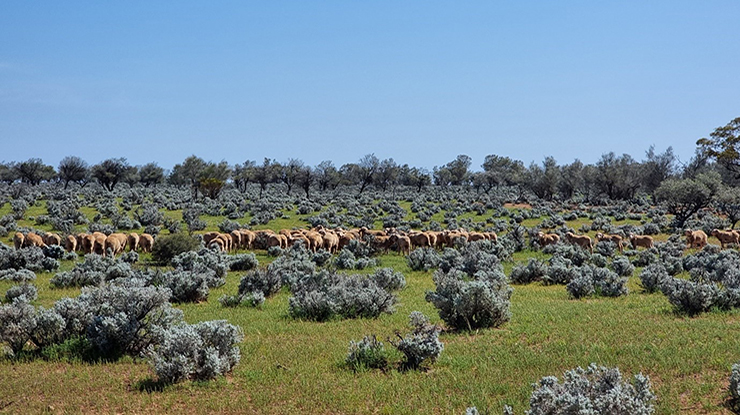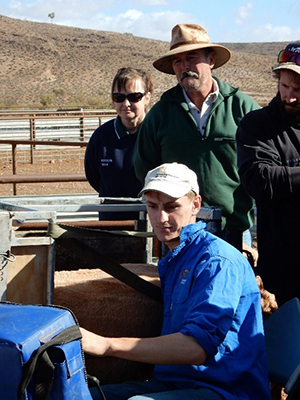 Merinos on David Lindner’s SA property, ‘Wonga’.
Merinos on David Lindner’s SA property, ‘Wonga’.
From marketing to management, pregnancy scanning of ewes has delivered many benefits to South Australian sheep producer, David Lindner.
David has used scanning as a tool to keep reproductive rates high in dry times in his self-replacing Merino flock at ‘Wonga’, near Morgan, SA.
“In the dry times, by scanning, we can get all our dry ewes out of the mob and then give the ewes in lamb the best feed resource leading up to and directly after lambing – so you haven’t got those dry ewes competing with those lambing ewes,” David said.
Pregnancy scanning coupled with two carefully staggered lambings – with 5,000 ewes lambing in July/August and the remaining 2,000 lambing in March/April – has spread Wonga’s lambing risk and helped get more lambs on the ground in drier times.
“We’d scan and that would let us mate the dry ewes again really quick or sell early to reduce the pressure on the land – so not only would we actually get those dry ewes producing, but they’re kept in sync with our other lambings,” David said.
“By scanning my ewes, I know within 45 days of taking the rams out what lambing percentage I can get, and what management strategies I can use.
“The other positive out of that is if you do that with your maiden ewes, instead of getting 80–85% lambing rates with them in their first 12 months, you can get that extra 10%.”
Identifying dry ewes to be culled using pregnancy scanning has also given David a marketing advantage with ewes he sells on.
“We’ve always sold our ewes on when they reach four-and-a-half-years of age so they’re still useful for another breeder,” David said.
“If you follow that strategy of scanning and culling the dry ones out of the mob, it gives a marketing edge as those ewes could go to a prime lamb operation, seeing there’s minimal risk of purchasing dry ewes.”
Marketing advantage

SA sheep scanner Josh Cousins of Cousins Merino Services (pictured right in blue) is also finding his clients are getting a marketing advantage for their flock from pregnancy scanning.
“Many producers are using it as a marketing tool, as people are paying top dollar for scanned in lamb ewes now,” Josh said.
According to Josh, the possibilities to boost profitability with the aid of scanning are huge.
“It’s useful as a reliable indicator of your potential lambing numbers, and it allows you to identify where any production losses are occurring so you can manage that accordingly.”
“You can separate off your dry ewes and either sell them, re-mate them or put them aside somewhere as they don’t need much handling.
“By scanning for multiples, you can also meet those much higher nutritional requirements for twin bearing ewes and really increase lamb survival rates.”
When it comes to getting ewes scanned after their next joining, Josh said there were a few things producers should keep in mind to get the best returns.
“Book the scanning in for the correct dates, especially for multiples, as that has the biggest effect on accuracy,” Josh said.
“Once the fetus gets over 80–100 days old, it just becomes too large and there’s too many complications for the scanner to be able to determine the number of lambs accurately – similarly, if you’re too early and the fetus isn’t developed, the scanner won’t be able to pick it up.
“You also need ewes to have about eight hours off feed and water for increased accuracy.
“Having yards that enable the easy, steady flowing movement of sheep helps increase the accuracy too, as the ewes are not kicking around as much when you’re scanning.”
SEASONAL ACTION PLAN |
1. Call your scanner now to book in for a late summer scanning if you’ve just joined your ewes. 2. Complete the Towards90 module on pregnancy scanning to see the benefits it can provide your business at towards90.com.au 3. Get involved in this PDS to see how pregnancy scanning can boost your flock’s reproductive performance: Pregnancy scanning in extensive sheep flocks |








